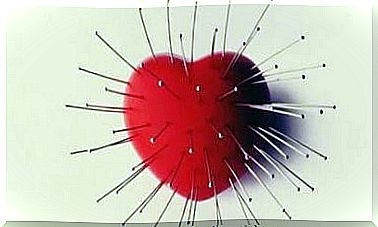Schwartz’s 4-step Technique For Chasing Obsessive Thoughts

Obsessive thoughts are mental products that seem to go their own way. In most cases, we try to slow them down or control them. And finally, they only multiply exponentially. Discover Schwartz’s technique.
When we deny or avoid being obsessed with something, we keep that obsession in our mind for longer. Think about that typical summer hit you hate that keeps spinning around in your head.
We know that preventive exposure to obsession is the treatment of choice for obsessive-compulsive disorder, especially if it is accompanied by rituals. In the case of pure obsessions, one can choose to record the obsession or write it down and expose yourself to it repeatedly, until the anxiety subsides.
There is a new and very effective technique based on cognitive therapy which appears to give promising results in some patients. This is Dr. Schwartz’s 4-step technique. Jeffrey Schwartz is a leading researcher who has conducted studies on the brain plasticity of obsessive-compulsive disorder.
Dr. Schwartz has shown that thanks to the 4-step technique, people with OCD not only control their obsessive thoughts, but the metabolism of this neural circuit has returned to normal levels.

Schwartz’s 4-step technique
As its name suggests, this technique consists of 4 cognitive stages that the patient must go through each time an obsessive thought comes to mind.
The goal is for the patient to create a habit, so that the technique becomes part of their daily routine. The first three steps are the most important, especially at the start of treatment. Schwartz’s 4-step technique is based on the “4 Rs”:
Relabel
Essentially, re-labeling of thoughts is about giving our thoughts and actions the name they really have: obsessions and compulsions. We need to be aware of what is happening to us. OCD is a pathology and our obsessions are the product of it, just like neutralizations.
This way, it will be easier for you to put everything back in its place. To practice relabeling, you don’t have to say to yourself, “ I think I can hurt my mom if I don’t count to 100 before I go to bed, ” but rather, “ My obsessive-compulsive disorder. is at the origin of this thought. So the idea that I’m going to hurt my mom if I don’t count to 100 before going to bed is a product of the disorder. “
So it comes down to making the necessary effort to maintain your vigilance or to be what we call an impartial spectator. In other words, to have the power of self-observation with the ability to recognize what is real and what is only a symptom and to reject the pathological impulse until it begins to give way and to disappear.
Schwartz technique: reallocate
The objective of this step is to attribute the responsibility for the obsessive symptomatology to the subject who belongs to him, that is to say to the OCD itself. The idea is for the person to be like, “It’s not me, it’s OCD.” OCD is rooted in a biochemical imbalance in the brain and / or in childhood learning errors.
There is a great need to understand the role the brain plays in the thoughts and impulses of OCD. If we know that it is a psychological or medical condition and we do not merge it with ourselves, we can find arguments to avoid avoidance behaviors.
In addition, the most demoralizing and destructive behaviors characteristic of people with OCD will be less frequent. The frustrated attempt to try to eliminate thoughts and impulses.
Recenter
The goal of refocusing is to shift our attention, even for a few minutes, to another problem that has nothing to do with our thoughts. Obsessive people develop an automatic and rapid habit based on what they think and think about. It is because, having realized in the previous stages of what is happening to you, you are effecting a “shift of gears” and consciously disautomatizing the brain.
For this, leisure is an excellent alternative. You can go for a run with your dog, plant seeds in a pot and water them, paint a picture, listen to music, or anything else you can think of that inhibits your impulses. An internal dialogue that can help you is: “ I have a thought because of my obsessive-compulsive disorder, it’s not real, it’s time to do something else ”.

Schwartz technique: reassessing
Reassessing is essentially putting in place the “two A’s”: Accept and Anticipate. Regarding acceptance, if you have completed the previous steps correctly, it will be easier for you to start re-evaluating your problem for what it is and accepting it. You won’t resign yourself and try to keep working to improve yourself, but neither will you struggle with your OCD because you already know that fighting and fixing with control only fuels OCD.
On the other hand, anticipating means saying to yourself : “ It seems that OCD is already starting to do its job, you know not to listen to it, to focus on something else productive and joyful. ”
Schwartz’s 4-step technique has been shown to be very effective in combating the symptoms of OCD. However, it is not always easy to apply it. The patient should train with motivation and commitment until it becomes a habit.
It is important, as we said, to work well on the first three steps. Indeed, they are the ones that will lead you to reduce your OCD. To see it as an “entity” that is outside of you. Who is not you. See it through the eyes of a pathological condition that you have had to experience and face, but which is possible to overcome.










